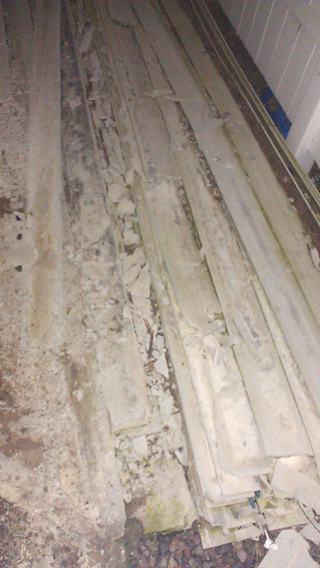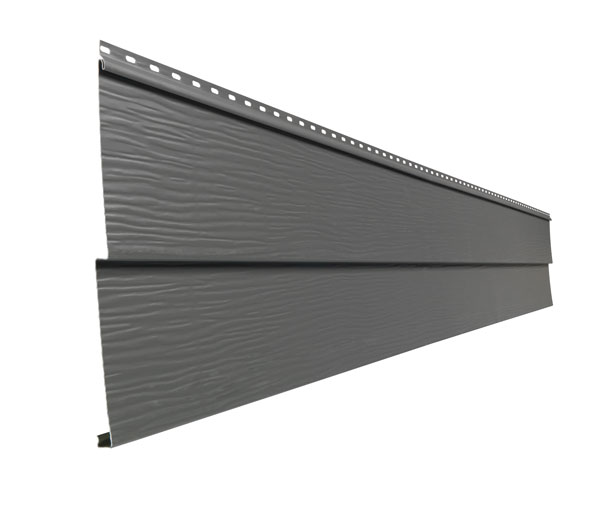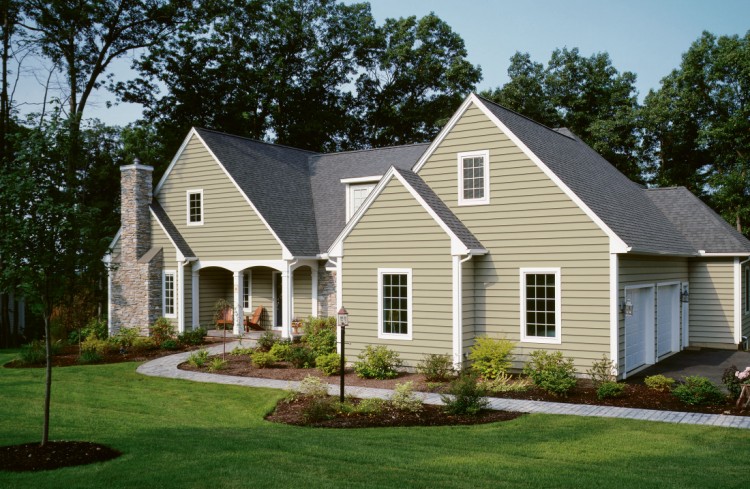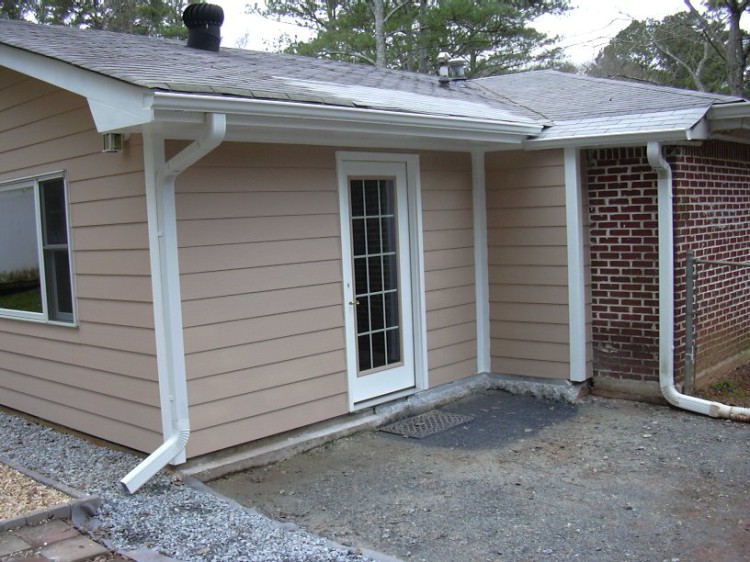If you are in search for a great looking, more durable, but cheaper alternative to wood siding, fiber cement siding is an option to consider. Fiber Cement siding is often called HardiPlank and HardiPanel as these are brand names for fiber cement siding manufactured by James Hardie Building Products. Because of the many benefits this material offers to homeowners in terms of price, durability, longevity and style options, fiber cement siding is quickly gaining in popularity. Learn more about the pros and cons of fiber cement siding to decide if this is the right siding material for your home.
What is fiber cement siding?
Fiber cement siding is made from portland cement mixed with ground sand, cellulose fiber, and other additives. It is available in a variety of thicknesses that range between 4.5-18mm. The material also varies in density – the lower density results in a fibrous rough edge when cut, while the higher density has a clean smooth edge. Density and thickness are both important factors to consider when buying fiber cement siding. As a rule of thumb, the thicker and denser the product the better resistance it will have to temperature fluctuations and sound transmission.
Fiber cement siding is manufactured either as planks or panels. Planks are made to resemble long wood planks. They are typically 12 feet long and have varying widths. The width gives fiber cement siding it’s “reveal”, or the amount of plank visible on lap siding. Panels are bigger sheets of siding ( typically 4 ft x 8 ft) and therefore cover a broader surface area per piece than planks. Fiber cement panels are often used to mimic vertical siding.
PROS
Economical
While fiber cement siding is more expensive than vinyl siding, it is still significantly cheaper than wood. This makes it a great option for homeowners who are looking for a high quality siding material without the premium cost. Compare vinyl siding cost cement siding.
Durable
A major benefit of fiber cement siding is that it is more durable than wood or stucco siding. It is better to purchase the thicker/denser fiber cement products because they have excellent impact resistance. On the other hand, the thinner less dense varieties of fiber cement siding need to be protected from impact. Another advantage is that compared to wood siding, fiber cement is not susceptible to termites, fungus or rot. When properly painted and installed, it is also not susceptible to moisture. Moreover,HardieZone fiber cement siding is engineered to withstand tough characteristics of the North American climate, such as freezing cold temperatures, strong sun and hurricane-force winds. It is common for fiber cement siding to have a warranty of up to 50 years.
Fire resistant
Fibre cement siding is a non combustible material, which makes it ideal for homes located in regions prone to bush/forest fires.
Low maintenance
Once installed and painted, fiber cement siding requires minimal maintenance. You will still need to repaint fiber cement siding every 4-5 years, but this is still not be nearly as often as you would have to repaint wood siding. To prolong the length of time until you have to first repaint the siding, it is possible to purchase fiber cement products that are primed or primed-and-painted at the factory. While this is initially more expensive, this saves money and hassle down the road, since the paint is applied at the factory under optimal conditions and therefore lasts a lot longer than conventional paint applied after the siding is installed.
Great Curb Appeal
Fiber cement siding offers homeowners an opportunity to make the exterior of their home highly visually appealing. This siding can be manufactured to resemble stucco, wood clapboards, or cedar shingles, depending on how the panels are textured. Many homeowners love cement fiber siding becomes it comes the closest to emulating a natural wood grain. Premium grade fiber cement siding is often virtually indistinguishable from some wood siding products. Moreover, trim and millwork pieces are also available to provide design detail for the home.
CONS
 Difficult Installation
Difficult Installation
One disadvantage of fiber cement siding is that it is difficult to install. Consequently, this installation is likely to cost you more than installing some other types of siding. Fibre cement siding is a very heavy product and requires two people to carry the uncut sheets and then install them once they have been cut. Before installation, fiber cement siding is very fragile and is prone to chipping and breakage if improperly handled. This means that you should choose your contractor wisely and hire a professional who has a lot of experience installing fiber cement siding.
Storage Issues
Fiber cement siding, while is moisture resistant – is not immune to moisture. If stored in conditions where it is exposed to element (not on the house), it will soak in water, and the freeze cycle will cause cracks and breakage of panels. This will render such panels unusable for installation. Cement siding must be stored in dry warehouse – never in the open, even if wrapped in plastic.





